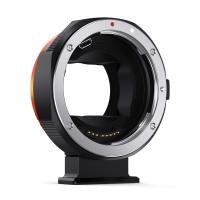What Is Asymptomatic Microscopic Hematuria ?
Asymptomatic microscopic hematuria refers to the presence of red blood cells in the urine that cannot be seen with the naked eye and does not cause any noticeable symptoms. It is typically detected through a routine urine test. While the exact cause of asymptomatic microscopic hematuria is often unknown, it can be associated with various conditions such as urinary tract infections, kidney stones, bladder or kidney infections, certain medications, strenuous exercise, or even certain inherited disorders. It is important to further investigate the underlying cause of asymptomatic microscopic hematuria to rule out any serious conditions, such as kidney or bladder cancer. Additional tests, such as imaging studies or cystoscopy, may be recommended by a healthcare professional to determine the cause and appropriate management of this condition.
1、 Definition and prevalence of asymptomatic microscopic hematuria
Asymptomatic microscopic hematuria refers to the presence of red blood cells in the urine that cannot be detected by the naked eye and does not present any noticeable symptoms. It is typically discovered incidentally during routine urine tests or check-ups.
The definition of asymptomatic microscopic hematuria varies slightly among medical professionals, but it is generally agreed upon when three or more red blood cells are found per high-power field in a urine sample. It is important to note that the presence of red blood cells in the urine does not necessarily indicate a serious underlying condition, as there are various benign causes such as urinary tract infections, exercise-induced hematuria, or menstruation in females.
The prevalence of asymptomatic microscopic hematuria varies depending on the population being studied. In the general population, it is estimated to be around 2-21%, with higher rates observed in older individuals. However, the prevalence can be significantly higher in certain subgroups, such as smokers or individuals with a family history of kidney disease.
Recent studies have shed light on the significance of asymptomatic microscopic hematuria as a potential marker for underlying kidney or urinary tract diseases. It has been associated with an increased risk of kidney stones, urinary tract infections, bladder cancer, and kidney diseases such as glomerulonephritis or IgA nephropathy. Therefore, it is important to evaluate and investigate the underlying cause of asymptomatic microscopic hematuria to rule out any serious conditions.
However, the management and follow-up of asymptomatic microscopic hematuria remain a topic of debate. Some guidelines recommend further evaluation, including imaging studies and cystoscopy, while others suggest a more conservative approach with periodic monitoring. The decision should be individualized based on the patient's age, risk factors, and clinical judgment.
In conclusion, asymptomatic microscopic hematuria refers to the presence of red blood cells in the urine without any noticeable symptoms. While it can be a benign finding, it may also indicate an underlying kidney or urinary tract disease. Further evaluation and management should be tailored to each patient's specific circumstances.
2、 Causes and risk factors for asymptomatic microscopic hematuria
Asymptomatic microscopic hematuria refers to the presence of red blood cells in the urine, which is not visible to the naked eye and does not cause any noticeable symptoms such as pain or discomfort during urination. It is typically detected through routine urine tests or during medical examinations.
There are several causes and risk factors associated with asymptomatic microscopic hematuria. These include urinary tract infections, kidney stones, bladder or kidney infections, certain medications (such as blood thinners), strenuous exercise, and recent trauma or injury to the urinary tract. In some cases, the cause may be more serious, such as kidney or bladder cancer, kidney disease, or certain genetic disorders.
It is important to note that the presence of asymptomatic microscopic hematuria does not always indicate a serious underlying condition. In fact, studies have shown that the majority of cases are benign and resolve on their own without any treatment. However, it is still crucial to investigate the cause to rule out any potential health issues.
Recent research suggests that the risk factors for asymptomatic microscopic hematuria may vary depending on age and gender. For example, in older adults, the risk of urinary tract infections and bladder or kidney stones increases, while in younger individuals, strenuous exercise and recent trauma may be more common causes. Additionally, certain lifestyle factors such as smoking and exposure to environmental toxins may also contribute to the development of asymptomatic microscopic hematuria.
In conclusion, asymptomatic microscopic hematuria refers to the presence of red blood cells in the urine without any noticeable symptoms. While the majority of cases are benign and resolve on their own, it is important to investigate the underlying cause to rule out any potential health issues. The risk factors for asymptomatic microscopic hematuria may vary depending on age, gender, and lifestyle factors. Regular medical check-ups and urine tests are essential for early detection and appropriate management of this condition.
3、 Diagnostic evaluation and screening for asymptomatic microscopic hematuria
Asymptomatic microscopic hematuria refers to the presence of red blood cells in the urine that cannot be detected by the naked eye and does not cause any noticeable symptoms such as pain or discomfort. It is usually discovered incidentally during routine urine tests or screenings.
Diagnostic evaluation and screening for asymptomatic microscopic hematuria are important to identify any underlying causes or potential health issues. The evaluation typically involves a thorough medical history, physical examination, and laboratory tests. Additional diagnostic procedures may be recommended based on the individual's age, gender, and risk factors.
The latest point of view regarding the evaluation and screening of asymptomatic microscopic hematuria suggests that a risk-based approach should be adopted. This means that the decision to pursue further evaluation should be based on the individual's age, gender, and other risk factors such as smoking, occupational exposure, and family history of kidney disease or urinary tract cancer.
In general, individuals over the age of 35 with asymptomatic microscopic hematuria should undergo further evaluation, as they have a higher risk of underlying urinary tract malignancy. This may include imaging studies such as ultrasound, computed tomography (CT) scan, or magnetic resonance imaging (MRI), as well as cystoscopy to visualize the bladder and urethra.
However, for individuals under the age of 35, the risk of urinary tract malignancy is relatively low. Therefore, a more conservative approach may be taken, with repeat urine tests and monitoring for any changes or development of symptoms over time.
It is important to note that the evaluation and screening guidelines for asymptomatic microscopic hematuria may vary depending on the country and medical society. Therefore, it is recommended to consult with a healthcare professional to determine the most appropriate approach based on individual circumstances.
4、 Management and treatment options for asymptomatic microscopic hematuria
Asymptomatic microscopic hematuria refers to the presence of red blood cells in the urine, which is not visible to the naked eye and does not cause any symptoms such as pain or discomfort during urination. It is typically detected through routine urine tests or during medical examinations for other conditions.
The management and treatment options for asymptomatic microscopic hematuria depend on the underlying cause. In many cases, no specific treatment is required, as the condition may resolve on its own. However, further evaluation is necessary to rule out any serious underlying conditions, especially in individuals at higher risk, such as those over the age of 40 or with a history of smoking, exposure to certain chemicals, or a family history of kidney disease or urinary tract cancers.
The latest point of view suggests that a thorough evaluation is essential to identify the cause of asymptomatic microscopic hematuria. This may involve additional tests such as urine cytology, imaging studies (such as ultrasound, CT scan, or MRI), and cystoscopy (a procedure to examine the bladder and urethra). The goal is to identify any potential underlying conditions, such as urinary tract infections, kidney stones, bladder or kidney tumors, or certain kidney diseases.
Once the cause is determined, appropriate management strategies can be implemented. Treatment options may include antibiotics for infections, lifestyle modifications (such as increased fluid intake and dietary changes) for kidney stones, or surgical interventions for tumors or other structural abnormalities. Regular follow-up and monitoring may also be recommended to ensure the condition does not worsen or progress to a more serious condition.
It is important to note that the management and treatment of asymptomatic microscopic hematuria should be individualized based on the underlying cause and the patient's overall health. Therefore, it is crucial to consult with a healthcare professional for proper evaluation and guidance.


































